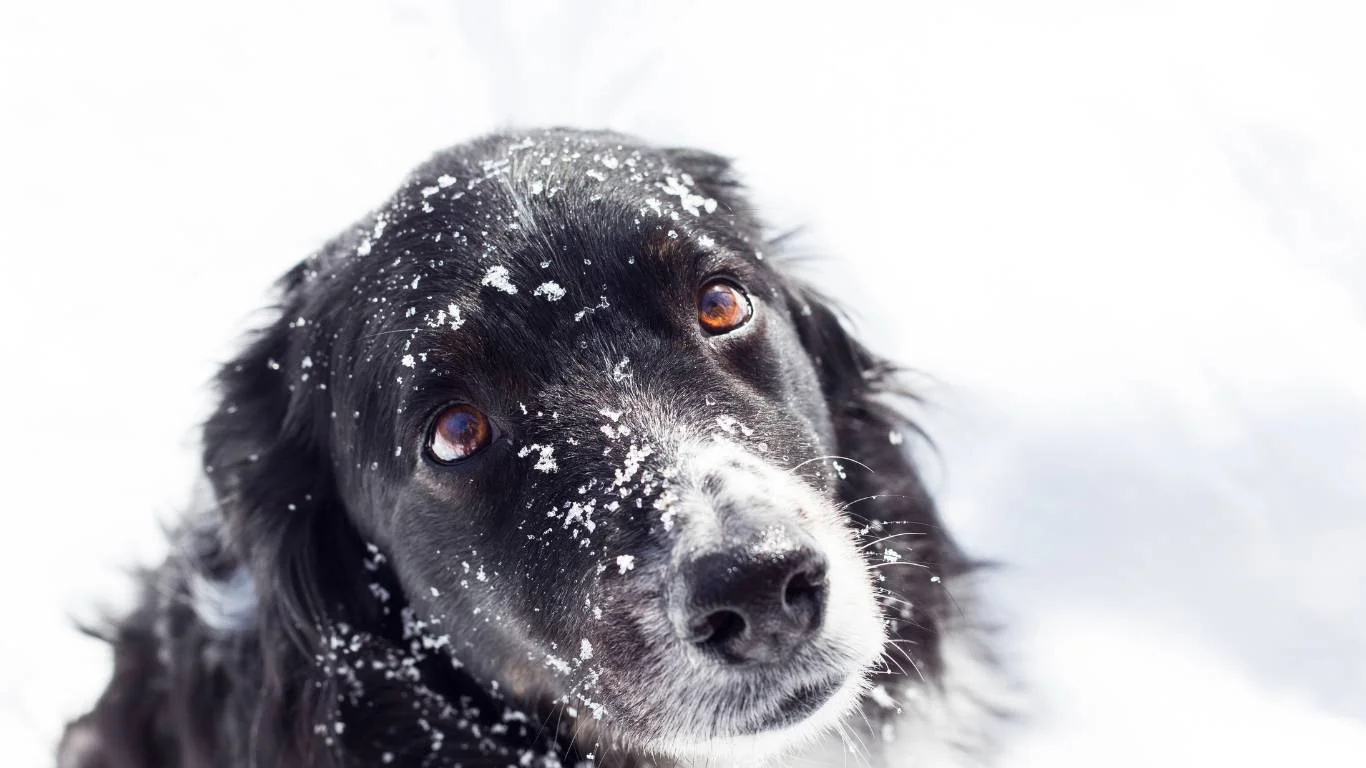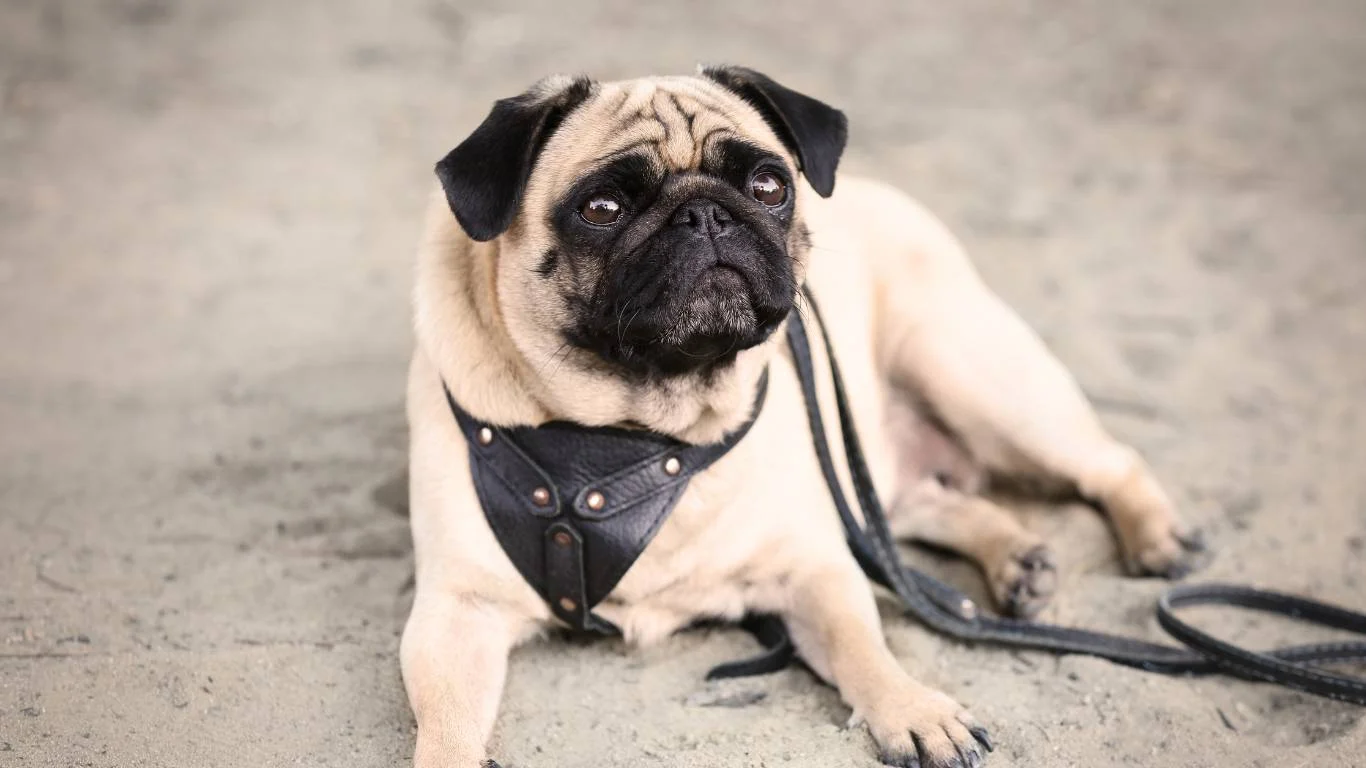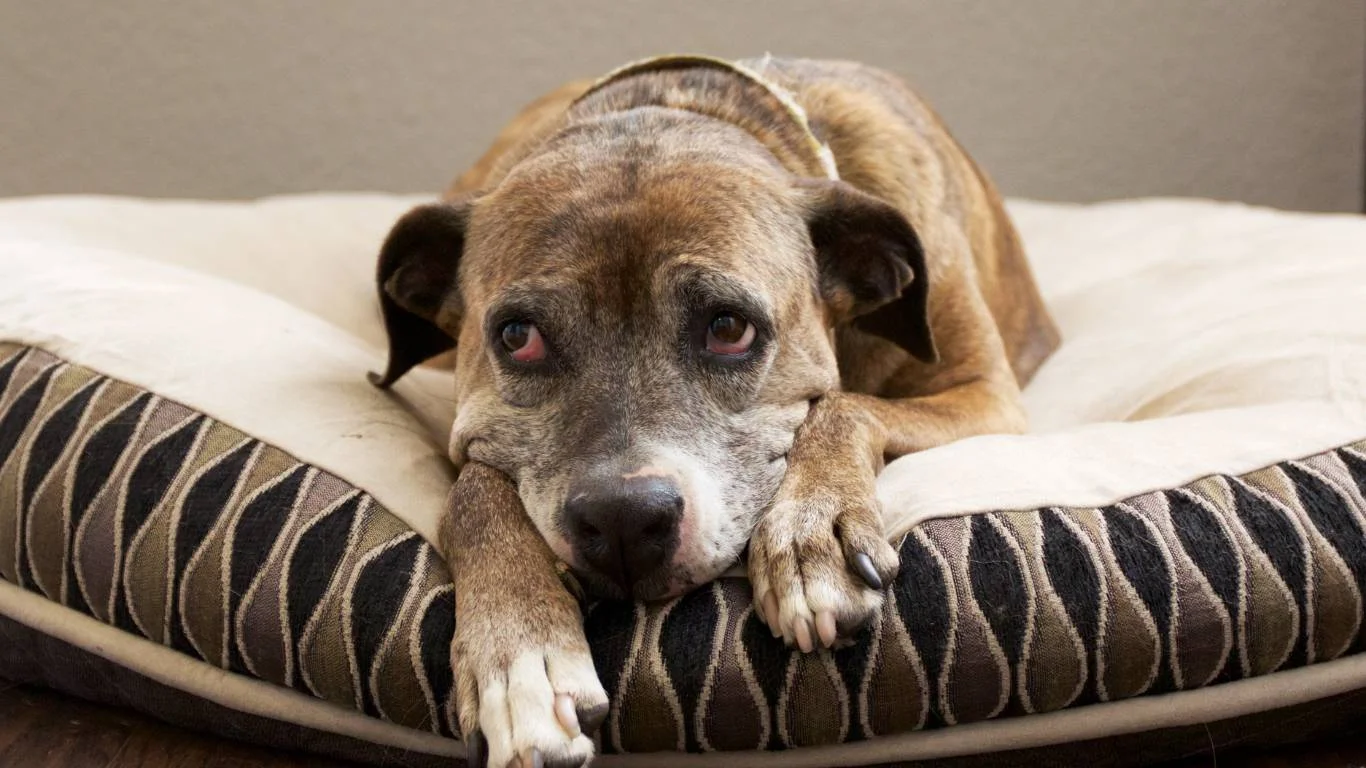What to Do if Your Dog Has Scabs: Effective Treatments and Solutions
As a veterinary assistant with a nutrition focus, I’ve seen a wide range of skin issues in dogs. One common concern that many dog owners bring up is scabs on their dog’s skin. It’s something that can be incredibly worrying, but understanding what to do if your dog has scabs on their skin is the first step in resolving the problem. Whether your dog is scratching, licking, or just seems a little off, it’s important to know how to handle it. In this article, we’ll explore some possible causes of scabs on your dog’s skin, how you can help your furry friend, and when to seek professional help. Let’s dive into the world of dog skin care!
What Are Scabs on a Dog’s Skin?
Scabs on a dog’s skin are simply crusted over areas of skin where the surface has been damaged due to injury, infection, or irritation. These scabs typically form as part of the natural healing process, protecting the wound underneath as it heals. They might occur as a result of your dog’s skin reacting to an allergen, insect bite, or even excessive licking and scratching. However, scabs can also point to underlying health issues, like infections, flea infestations, or even autoimmune diseases.

Possible Causes of Scabs on Your Dog’s Skin
1. Allergies
One of the most common causes of scabs on a dog’s skin is allergies. Dogs can be allergic to a variety of things, including certain foods, environmental factors like pollen, dust mites, or mold, and even flea saliva. When a dog is allergic to something, their immune system reacts by causing inflammation in the skin, which can lead to itching and scratching. If your dog’s scratching leads to the formation of scabs, it’s important to identify the source of the allergy to stop the cycle of irritation.
2. Flea Infestation
Fleas are another major culprit when it comes to scabs on a dog’s skin. Flea bites can cause intense itching, and when your dog scratches or bites the affected areas, they can create scabs. Fleas tend to hide in areas like your dog’s armpits, groin, and tail base. While flea infestations are common, they’re easily treatable with flea prevention treatments and regular grooming. If you notice your dog scratching frequently, it’s worth checking for fleas.
3. Dermatitis
Dermatitis is a term used for inflammation of the skin, and it can be caused by a number of factors. It might be linked to allergies, but it can also be triggered by bacterial or fungal infections. Dogs with dermatitis often have irritated, inflamed skin that leads to scabs. If you notice redness, swelling, or sores alongside the scabs, dermatitis could be the issue. In these cases, it’s best to seek advice from your vet, as they can prescribe medications to help treat the inflammation.

4. Bacterial or Fungal Infections
Infections are another reason why your dog may develop scabs. Bacterial and fungal infections often cause the skin to break down, creating crusty areas as a result of pus or exudate. Hot spots (acute moist dermatitis) are a prime example of this. These infections are usually caused by your dog licking or scratching an area excessively, which can lead to an open wound that becomes infected. If the scabs are accompanied by a foul odor or if the scabs seem to be spreading quickly, a visit to the vet is necessary.
5. Dry Skin and Environmental Factors
Sometimes, dry skin caused by environmental factors like low humidity, cold weather, or bathing too often can lead to scabs. If your dog is constantly exposed to dry air or harsh elements, their skin can become cracked and irritated, making it easier for scabs to form. Regular moisturizing with a dog-safe balm or ointment can help in these situations, but if the scabs don’t improve or seem to get worse, it’s important to have your dog checked by a vet.
How to Treat Scabs on Your Dog’s Skin
Knowing what to do if your dog has scabs on their skin can vary depending on the underlying cause. Here are some general guidelines for treatment:
- Visit Your Vet: It’s always a good idea to seek professional advice if your dog’s scabs don’t seem to improve, or if they worsen. Your vet will be able to diagnose the cause and suggest a proper treatment plan.
- Identify and Eliminate Allergens: If allergies are the cause, work with your vet to identify any allergens in your dog’s environment. This may include changing their diet, avoiding certain chemicals, or using allergy medications.
- Treat Fleas: If fleas are the problem, using a flea prevention treatment can help. You may also need to treat your home and other pets to ensure that the infestation is gone.
- Use Medicated Shampoos: In some cases, your vet may recommend a medicated shampoo to help soothe your dog’s irritated skin. These shampoos are often effective in reducing inflammation and preventing infection.
- Topical Treatments: Your vet may suggest topical treatments such as creams or ointments to help heal scabs and relieve itching. These treatments can help reduce inflammation and prevent further scratching.

When to Seek Professional Help for Your Dog’s Scabs
Sometimes, despite our best efforts, the scabs on your dog’s skin may not get better on their own, or you might notice that they’re spreading or becoming worse. This is when it’s important to consider seeking professional help. As much as we want to take care of our dogs at home, there are situations where a visit to the vet is necessary for their well-being.
1. Scabs That Don’t Heal
If you’ve been treating your dog’s scabs with the appropriate steps, such as cleaning the area, applying topical treatments, and using flea preventatives, but the scabs don’t seem to heal after a reasonable amount of time, it could signal a deeper issue. Scabs that persist for more than a couple of weeks might indicate a chronic skin condition, such as a fungal or bacterial infection, or even a more serious condition like autoimmune diseases. At this point, your vet can run tests to determine the exact cause and offer more targeted treatments.
2. Worsening Symptoms
If the scabs on your dog’s skin worsen rather than improve, it’s definitely time to contact your vet. This could mean that the scabs are spreading to other areas, becoming infected, or causing your dog significant distress. If your dog’s behavior changes – such as becoming more lethargic, losing their appetite, or excessively licking or chewing at the scabs – these are signs that the situation is getting worse. Don’t wait for the condition to worsen; a vet visit can help prevent further complications.

3. Additional Symptoms Like Fever or Discharge
In some cases, scabs on your dog’s skin can be accompanied by other symptoms, like a fever, unusual discharge from the scabs, or a strong odor. These are red flags that an infection might be present. If you notice any of these symptoms, it’s time to take your dog to the vet as soon as possible. Infections can quickly become more serious, and prompt treatment can make a huge difference in your dog’s recovery time.
Preventing Scabs on Your Dog’s Skin
While it’s important to know what to do if your dog has scabs on their skin, it’s just as important to take preventive measures to avoid the issue in the first place. As with most health concerns, prevention is key when it comes to skin issues. Below are a few tips I’ve learned over the years to help keep your dog’s skin healthy and scab-free:
1. Regular Grooming
One of the best ways to prevent scabs from forming on your dog’s skin is to maintain a regular grooming routine. Grooming doesn’t just make your dog look good; it helps keep their skin healthy by removing dirt, debris, and loose fur. This also allows you to spot potential issues early on, like ticks, fleas, or minor irritations, before they develop into bigger problems.
Brushing your dog’s coat helps to distribute natural oils, which keeps the skin moisturized and less prone to dryness. For dogs with longer hair, regular trimming is a must to avoid matting and tangling, which can cause irritation and lead to scabs if left untreated. Don’t forget to check your dog’s paws, ears, and underbelly, where skin issues can sometimes hide.

2. Flea Prevention
As I mentioned earlier, fleas are a major cause of scabs on a dog’s skin. Preventing flea infestations through regular flea treatments is one of the most effective ways to keep your dog’s skin healthy. There are many options available, including flea collars, topical treatments, and oral medications. Speak with your vet to determine the best flea prevention strategy based on your dog’s age, breed, and lifestyle.
In addition to treating your dog, make sure you’re addressing the environment as well. Fleas can infest your home, so vacuum regularly and wash your dog’s bedding in hot water to kill any fleas or eggs. Keeping your yard clean and free of fleas is equally important if your dog spends time outdoors.
3. Avoiding Allergens
If you know that your dog has allergies, whether it’s food, environmental factors, or something else, it’s crucial to minimize their exposure to the allergens. This might mean changing their diet, switching to hypoallergenic shampoos, or keeping them indoors during allergy seasons when pollen counts are high. Over time, you’ll get to know what triggers their allergies and how to prevent flare-ups. Allergy management can make a huge difference in your dog’s comfort and skin health.
4. Skin Moisturizing
Just like humans, dogs can suffer from dry, flaky skin, especially during colder months or in dry environments. Dry skin can lead to irritation and scab formation, so it’s a good idea to keep your dog’s skin moisturized. You can use dog-safe moisturizing shampoos and conditioners, or consider applying a light, vet-approved balm to dry areas. If your dog is prone to dry skin, regular baths using moisturizing products can help maintain their skin’s health.
What to Expect During a Vet Visit for Skin Issues
If you do decide to take your dog to the vet for their scabs, it’s helpful to know what to expect. When you arrive, the vet will first conduct a thorough examination of your dog’s skin and overall health. They’ll ask you about your dog’s symptoms, including when the scabs first appeared, whether there are any other signs like fever or discharge, and if there have been any changes in their diet or lifestyle.
Depending on the findings, the vet may perform additional tests, such as skin scrapings, blood work, or even allergy testing. This will help them pinpoint the exact cause of the scabs and recommend the best treatment plan for your dog’s specific condition. It’s essential to be honest and thorough when answering your vet’s questions, as this information will help them provide the best care for your dog.

Home Remedies for Your Dog’s Scabs: What Works and What Doesn’t
If your dog is experiencing scabs on their skin, sometimes you may feel like taking matters into your own hands before heading to the vet. I get it—no one wants to see their dog suffer, and if it’s something mild, you might wonder if there are home remedies you can try first. While some remedies can work wonders, others might make things worse. Based on my experience, here are a few things you can safely try at home to ease your dog’s discomfort:
1. Oatmeal Baths
Oatmeal is known for its soothing properties, and it’s a great natural remedy to help calm irritated skin. If your dog has scabs from allergies, dry skin, or mild itching, an oatmeal bath can bring relief. To give your dog an oatmeal bath, simply grind plain, unflavored oatmeal into a fine powder and add it to warm bathwater. Make sure the water is not too hot or too cold, as extreme temperatures can irritate your dog’s skin further. Allow your dog to soak for around 10–15 minutes, gently massaging the oatmeal into the affected areas. Afterward, towel-dry them to avoid further irritation. Just be sure not to use any bath products with fragrances, as these can aggravate your dog’s skin.
2. Aloe Vera Gel
Aloe vera is often used for human skin issues, but did you know it can be effective for dogs as well? Aloe vera has anti-inflammatory properties that can help reduce itching and swelling while promoting healing. If you’re considering using aloe vera, make sure you use pure, pet-safe aloe vera gel. Avoid any aloe products with added alcohol or fragrances. Gently apply a thin layer to the scabbed area and allow it to air dry. However, don’t be alarmed if your dog tries to lick the area afterward—some dogs will instinctively try to lick the aloe, and it’s usually safe as long as it’s not ingested in large amounts.
3. Coconut Oil
Coconut oil is another natural remedy that many dog owners swear by. It has antifungal and antibacterial properties that can help heal minor skin infections and soothe dry, scabbed skin. Applying coconut oil to your dog’s affected areas can also help moisturize their skin and prevent further scab formation. However, it’s important to use it in moderation. Apply a small amount of organic, unrefined coconut oil to the affected areas, massaging it gently into the skin. Just be aware that too much coconut oil can lead to greasy fur, so don’t overdo it.
4. Apple Cider Vinegar Solution
Apple cider vinegar (ACV) is another household item that can be beneficial in treating dog skin problems. Its antibacterial and antifungal properties can help treat skin infections that might be contributing to the scabs. However, it’s important to dilute the apple cider vinegar with water before applying it to your dog’s skin. Mix one part ACV with one part water and apply it to the scabs using a clean cloth or cotton ball. Never apply undiluted ACV directly to the skin, as it can cause irritation. This solution can be especially effective for yeast infections or fungal issues, but use it with caution and stop if it seems to irritate your dog’s skin further.

When Scabs on Your Dog’s Skin Signal a Bigger Health Issue
While scabs can sometimes be a minor issue, in some cases, they can be a sign of a more serious underlying health problem. If your dog’s scabs seem to be linked to an ongoing, unresolved issue, it’s time to pay closer attention. These are some of the health issues that could be contributing to your dog’s scabs:
1. Autoimmune Disorders
Some autoimmune conditions, like lupus or pemphigus, can cause scabs and other skin lesions in dogs. These conditions happen when the dog’s immune system mistakenly attacks its own tissues. These disorders are usually chronic and require long-term management with immunosuppressive medications. If you notice that the scabs are particularly severe or that your dog’s skin lesions are spreading rapidly, it’s important to consult your vet to rule out autoimmune diseases.
2. Endocrine Disorders
Certain hormonal imbalances, like hypothyroidism or Cushing’s disease, can lead to skin problems in dogs. Scabs might form as a result of the skin becoming overly oily or excessively dry, depending on the nature of the hormonal imbalance. Dogs with these conditions might also show other signs, like weight gain, hair thinning, or changes in appetite. If you suspect that your dog might be dealing with an endocrine disorder, your vet can run blood tests to check hormone levels and prescribe treatment accordingly.
3. Bacterial or Fungal Infections
As mentioned earlier, bacterial and fungal infections can cause scabs on your dog’s skin. These infections might develop if your dog has a weakened immune system or if their skin is compromised by excessive scratching or licking. In some cases, the scabs might be the result of a secondary infection that arises from an untreated skin issue, such as allergies or hot spots. A vet can perform tests to identify the specific type of infection and provide the appropriate antibiotics or antifungal medications to clear it up.
4. Cancer
Though rare, it’s important to be aware that some types of skin cancer, like squamous cell carcinoma or mast cell tumors, can cause scabs to form on your dog’s skin. These types of cancers typically appear as lumps or bumps on the skin, and the scabs may form as the tumor grows. If your dog’s scabs are associated with a growth or a mass on the skin, it’s crucial to have the area evaluated by your vet as soon as possible. Early detection of cancer can improve the prognosis significantly.
References
For more information on dog skin care, check out these reliable resources:
Disclaimer
This article is intended for informational purposes only. It should not be considered a substitute for professional veterinary advice, diagnosis, or treatment. Always seek the advice of your veterinarian or other qualified animal health provider with any questions you may have regarding your dog’s health. Never disregard professional advice or delay in seeking it because of something you have read here.






